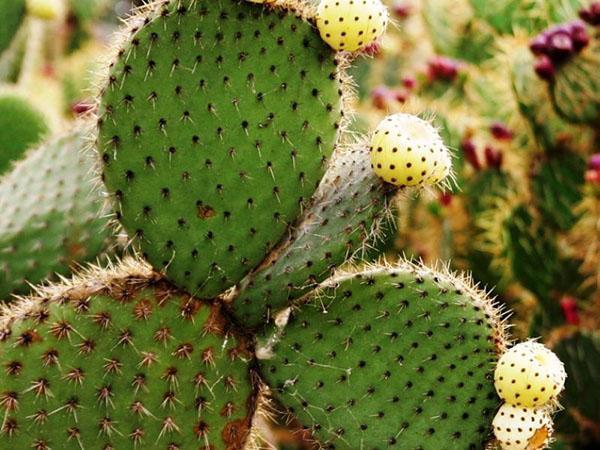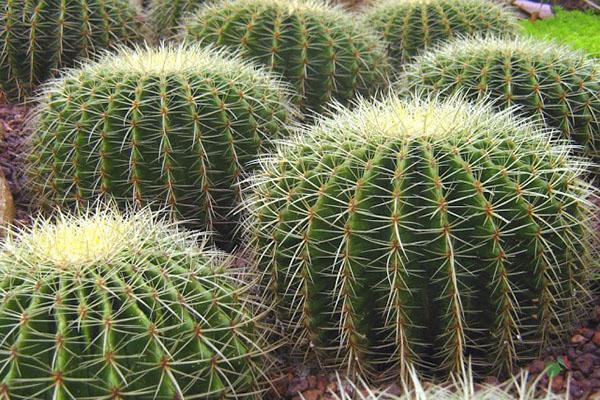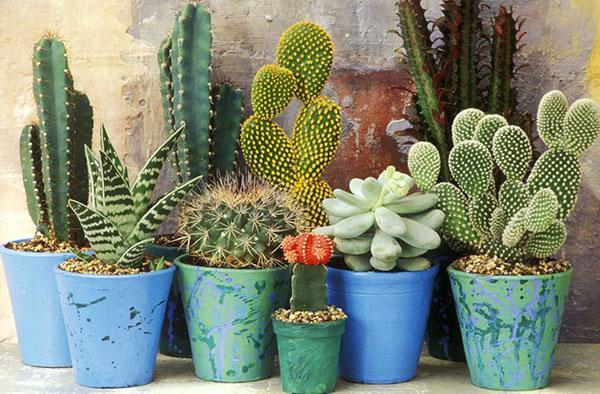Useful properties of cactus and its use in everyday life
 Cactus Are very common, unpretentious ornamental plants that are well-respected by flower growers around the world. The beneficial properties of a cactus are difficult to overestimate, because these plants contain a lot of vitamins, trace elements and minerals necessary for the human body, some of which are known for their antibacterial properties.
Cactus Are very common, unpretentious ornamental plants that are well-respected by flower growers around the world. The beneficial properties of a cactus are difficult to overestimate, because these plants contain a lot of vitamins, trace elements and minerals necessary for the human body, some of which are known for their antibacterial properties.
general information

With the arrival of Hollywood in our homes, many moviegoers were surprised to learn that from the cactus Lophophora williamsii they produce a narcotic drug - mescaline, which is prohibited in a number of countries, including Russia. Mexico is famous for tequila - a famous alcoholic drink made from "blue agave" - one of the many succulents. In fact, plants from the extensive cactus family are actively used in traditional pharmacology and folk medicine, in everyday life, in the food industry, cosmetology, and sports.
Cacti belong to the group of succulents. Today there are more than 1200 varieties of this plant. There are cacti:
- Treelike, having a stiff trunk, and thickened shoots instead of leaves.
- Columnar, the height of which can reach 25 meters.
- Bushy, characterized by a shortened central stem.
- There are species with creeping and climbing shoots.
Cacti can be of different sizes and shapes, but the main characteristic of the cactus plant is the presence of an uneven stem structure and its segmented structure.
It is interesting to know that there are thornless cacti that have preserved their leaves.
The use of cacti in everyday life
 The benefits of a cactus for humans go far beyond the absorption of negative energy in the home. Since ancient times, this plant has been used as a building material, fodder for livestock, natural fences for private households.
The benefits of a cactus for humans go far beyond the absorption of negative energy in the home. Since ancient times, this plant has been used as a building material, fodder for livestock, natural fences for private households.
Many people in South America make souvenirs and amulets from cacti that are in demand among tourists. Belts made from the Ferocactus wislizenii cactus are not inferior in their properties to the best leather products.
From the trunks of some varieties of cactus, light, strong and durable furniture, window frames and door leaves are produced. Due to the bactericidal properties, cactus products are practically not affected by fungi and mold.
The use of cactus in cooking
 Residents of Chile, Peru, Argentina and Mexico actively use the fruits and pulp of these varieties in cooking. The fruits are most often eaten raw. Today, 172 species of cactus with edible fruits are used for food. The fruits of plants of the opuntia subfamily are most in demand in cooking.
Residents of Chile, Peru, Argentina and Mexico actively use the fruits and pulp of these varieties in cooking. The fruits are most often eaten raw. Today, 172 species of cactus with edible fruits are used for food. The fruits of plants of the opuntia subfamily are most in demand in cooking.  Outwardly, they resemble a pear, more often burgundy, less often purple with juicy and sweet pulp.
Outwardly, they resemble a pear, more often burgundy, less often purple with juicy and sweet pulp.
Pitahaya, a healthy cactus fruit, has high taste and nutritional value.
 The pulp of cactus is baked, boiled and stewed. What is made from a cactus? The plant sap is used in preparation:
The pulp of cactus is baked, boiled and stewed. What is made from a cactus? The plant sap is used in preparation:
- desserts;
- tonic drinks;
- candied fruits and marmalades;
- sweets and other confectionery.
The high sugar content allows some varieties to be used as the main ingredient in the production of beer and spirits.
The use of cactus in medicine
 How are cacti useful for human health? For a long time, the indigenous people of South America have used some varieties of this plant as a natural "bactericidal patch" to relieve joint pain and to heal wounds. Eating cactus fruits and pulp increases the production of insulin, a hormone that has a tremendous effect on metabolic processes in the human body. In addition, insulin is responsible for regulating blood glucose levels, which is vital for patients with "diabetes". It is noticed that the powder from dried prickly pear cactus has an excellent hemostatic effect that can resist the development of pathogenic bacteria.
How are cacti useful for human health? For a long time, the indigenous people of South America have used some varieties of this plant as a natural "bactericidal patch" to relieve joint pain and to heal wounds. Eating cactus fruits and pulp increases the production of insulin, a hormone that has a tremendous effect on metabolic processes in the human body. In addition, insulin is responsible for regulating blood glucose levels, which is vital for patients with "diabetes". It is noticed that the powder from dried prickly pear cactus has an excellent hemostatic effect that can resist the development of pathogenic bacteria.
 Knowing about the beneficial properties of cactus, many of our compatriots are interested in what drugs are produced by the modern pharmacological industry from the extract of this plant? On the basis of cactus in modern medicine, homeopathic preparations are produced, aimed at improving immunity and the general condition of a person. In addition, foreign pharmacologists have established the production of diuretics, wound healing, hemostatic drugs.
Knowing about the beneficial properties of cactus, many of our compatriots are interested in what drugs are produced by the modern pharmacological industry from the extract of this plant? On the basis of cactus in modern medicine, homeopathic preparations are produced, aimed at improving immunity and the general condition of a person. In addition, foreign pharmacologists have established the production of diuretics, wound healing, hemostatic drugs.
The cactus is widely used in modern cosmetology. Cactus seed oil is high in vitamin E, which slows down skin aging. In addition, the oil contains linoleic acid (Omega 6), which is a component of the lipid layer of the skin, which is responsible for saturating the epidermis with the required amount of moisture. Ointments based on cactus oil have a lot of useful properties: antiallergic, soothing and wound healing, preventing premature aging of the skin.
Cactus in folk medicine
 In folk medicine, alcoholic tincture of cactus is used to strengthen the immune system. To do this, mix 3 prickly pear flowers with 5 grams of partitions walnut and 500 ml of vodka. Insist 7 days in a cool dark place. Take 1 tbsp. spoon three times a day before meals. In order to prevent colds, it is recommended to drink green tea with cactus, which can be easily purchased at the store.
In folk medicine, alcoholic tincture of cactus is used to strengthen the immune system. To do this, mix 3 prickly pear flowers with 5 grams of partitions walnut and 500 ml of vodka. Insist 7 days in a cool dark place. Take 1 tbsp. spoon three times a day before meals. In order to prevent colds, it is recommended to drink green tea with cactus, which can be easily purchased at the store.
 To relieve cough, juice should be mixed in equal proportions prickly pears and marshmallow. For rapid wound healing, a gauze bandage soaked in the composition is used. For two parts of mixed cactus juice, take one part of horseradish juice.
To relieve cough, juice should be mixed in equal proportions prickly pears and marshmallow. For rapid wound healing, a gauze bandage soaked in the composition is used. For two parts of mixed cactus juice, take one part of horseradish juice.
Useful properties of the prickly pear cactus
 The fruits of "fig prickly pear" have a high therapeutic effect. Its berries contain alkaloids, hormones, essential oils. Despite the high sugar content, the fruits of this plant have a low calorie content (41 kcal per 100 g). Due to this, they are successfully used in dietary nutrition. The fruits contain vitamins A, B1, B2, B6, B9, C, PP, as well as potassium, calcium, magnesium, phosphorus and sodium, iron, zinc and copper.
The fruits of "fig prickly pear" have a high therapeutic effect. Its berries contain alkaloids, hormones, essential oils. Despite the high sugar content, the fruits of this plant have a low calorie content (41 kcal per 100 g). Due to this, they are successfully used in dietary nutrition. The fruits contain vitamins A, B1, B2, B6, B9, C, PP, as well as potassium, calcium, magnesium, phosphorus and sodium, iron, zinc and copper.
Useful properties of prickly pear cactus:
- The high fiber content stimulates the intestines and helps to eliminate toxins from the body.
- Carbohydrates saturate the human body with the necessary energy.
- The huge amount of iron increases the level of hemoglobin in the blood.
- The copper contained in the pulp of the fruit helps to normalize blood pressure.
Regular consumption of prickly pear fruits helps a person get rid of:
- edema;
- inflammatory processes of the genitourinary system;
- respiratory system problems;
- stomatitis;
- scurvy;
- avitaminosis.
Plant juice:
- has a hemostatic effect:
- accelerates the regeneration of the skin:
- helps get rid of diarrhea;
- improves metabolic processes in the human body;
- restores the reproductive function of men;
- prevents the appearance of cellulite in women.
The harm of prickly pear to humans
 The main harm of prickly pear fruits lies in the presence of thorns located on the skin of the fruit in the form of fluff. If they enter the esophagus, they can injure the mucous membrane and provoke the appearance of ulcers in the gastrointestinal tract. The problem is that the cactus needles do not dissolve in stomach acid. Only surgical intervention is necessary to remove a thorn that has fallen into the mucous membrane of the esophagus or gastrointestinal tract.
The main harm of prickly pear fruits lies in the presence of thorns located on the skin of the fruit in the form of fluff. If they enter the esophagus, they can injure the mucous membrane and provoke the appearance of ulcers in the gastrointestinal tract. The problem is that the cactus needles do not dissolve in stomach acid. Only surgical intervention is necessary to remove a thorn that has fallen into the mucous membrane of the esophagus or gastrointestinal tract.
The effect of cactus on humans has not yet been fully understood. Children under 5 years old, pregnant women, and women during lactation are advised to refrain from consuming prickly pear fruits.